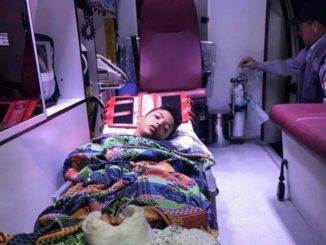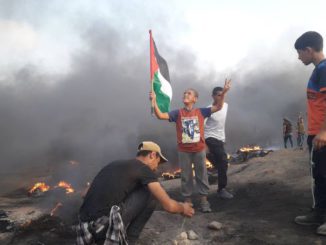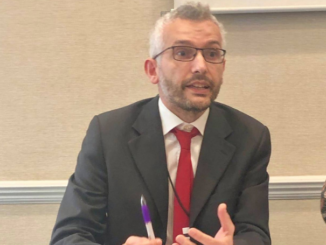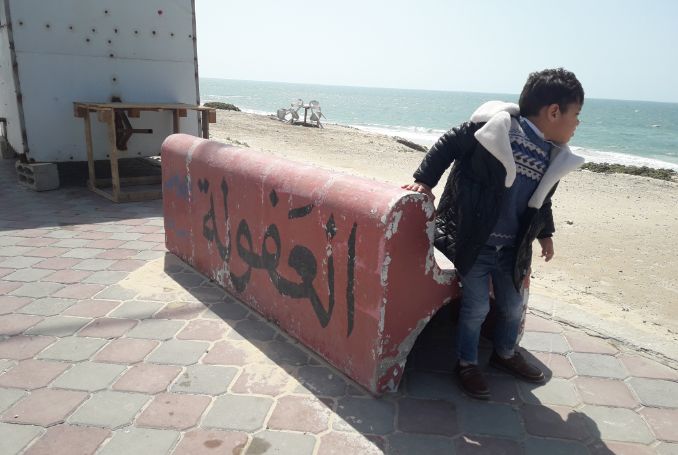
Every day at the Gaza Corniche, many refugees come from all over the besieged Gaza Strip to sit on chairs that carry the names of towns and villages from which they were expelled in 1947-48.
The Palestinian Nakba, the catastrophic loss of the Palestinian homeland is commemorated on May 15 of every year, for the last 70 years.
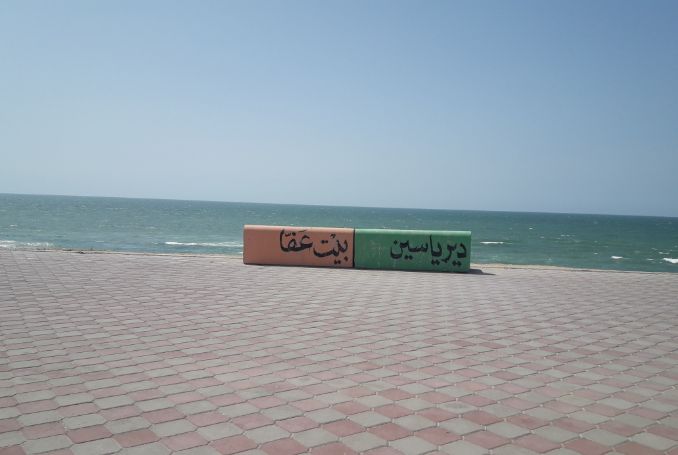
But for a group of Gaza artist, commemoration can also be creative and practical.
Each one of the seats carries the name of a destroyed city, town or village, along with the distance separating Gaza from that place: “Jerusalem, 70 km, Haifa, 153 km, Besan, 150 km, Tel Al-Rabee, 73 km, ..” and so on.
After the completion of the first phase of the Qatari-funded project for the restoration of Al-Rasheed Street and the Gaza Corniche, a group of local artists wrote the details of the villages on the seats.
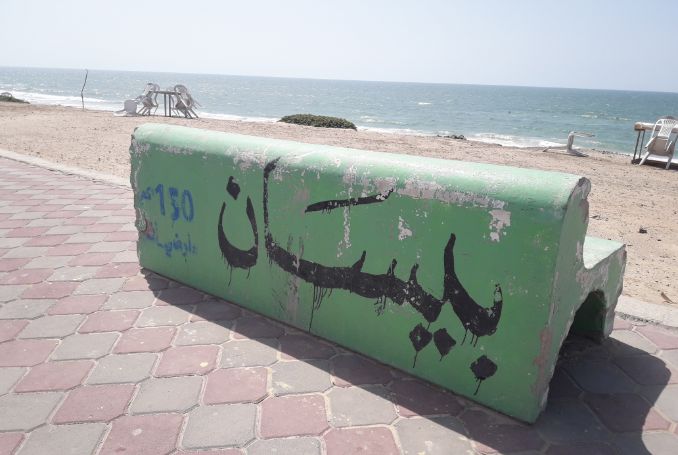
Nabil Abu Sultan, a 29-year-old graduate of psychology, is keen to sit on the seat of the town of Hamameh, 31 km from Gaza, where his family came from. Hamameh was destroyed 70 years ago, but the survivors and their descendants are determined to reclaim their legal right of return.
Abu Sultan told the Palestine Chronicle that he often takes his younger sisters and nephews to sit on the chair so that he can tell them more about their ancestral village, stories conveyed to him by his grandfather.
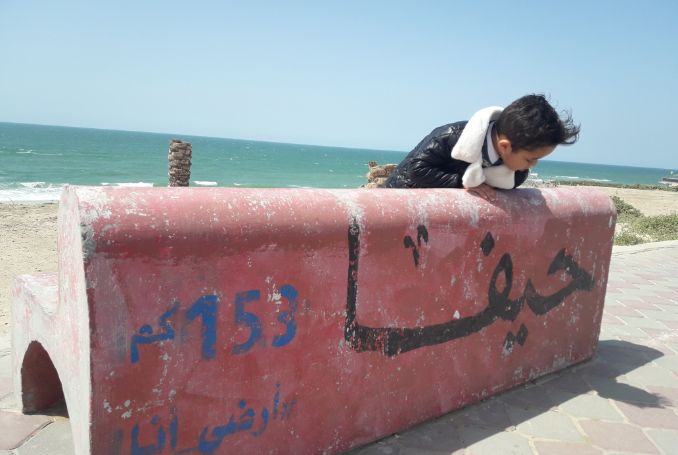
Amal Ahmed, a 63-year-old resident of the Nuseirat refugee camp in the central Gaza Strip, chose the Jerusalem seat because for her Jerusalem is the most important Palestinian city.
“I like to sit on the Jerusalem bench and visualize the distance to the city of Jerusalem from Gaza,” she said. “During my contemplation by the sea of Gaza, I try to see the gates of Jerusalem and its old neighborhoods and the minarets of Al-Aqsa Mosque.”
Amal has been denied the right to visit Jerusalem for the last 20 years, and all of Gaza has been under Israeli siege for nearly 13 years.
The Gaza beach is the only destination where two million besieged Palestinians can have a respite from the siege and the struggles of life under Israeli control. There, artists also gather and engage in various forms of artistic expression.
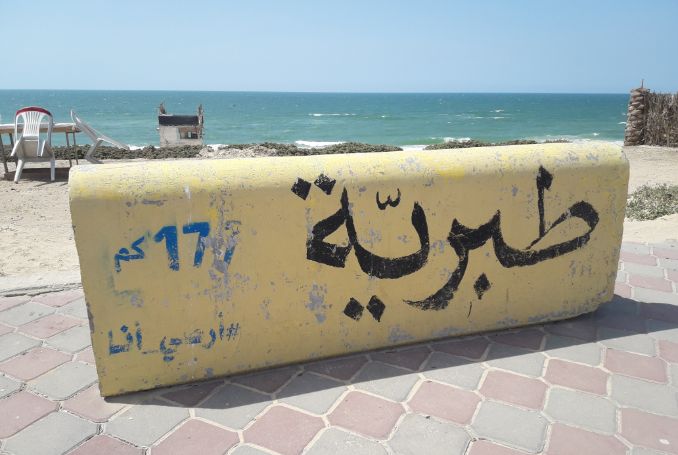
Artist Ossama Abu Sbita, 27, holds a BA in Accounting. He graduated six years ago, yet like most Gazan youth he is unemployed.
He resorted to art at the beach, where he uses sand as his own ink.
Abu Sbeita was one of the first artists to use the Gaza sand as his own canvass. He can be found at the southern side of the old Gaza port, with a small shovel and coloring material.
Other artists followed suit.
Before he was shot and killed by Israeli snipers, Mohammed Abu Amr, 27, was also a beach artist.
He sculpted dozens of beautiful artworks on the sand, the last of which was called “I will return,” alongside the Palestinian flag.
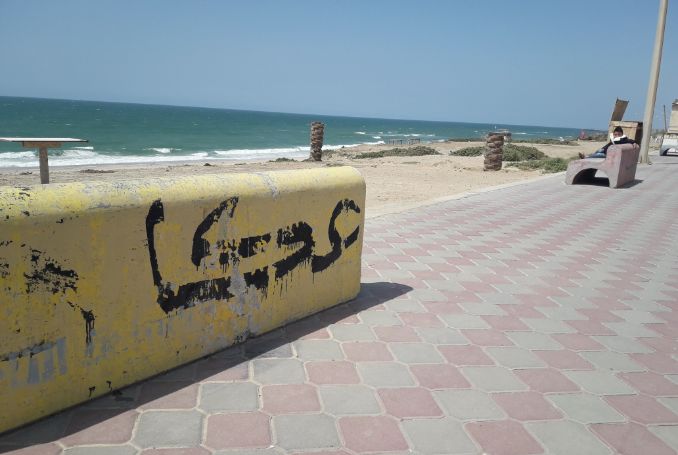
He was taking part in mass rallies on March 30, 2018, at the fence separating besieged Gaza from Israel, when he was struck and killed by an Israeli bullet.
Following his death, a number of artists carved what is believed to be the largest map of historic Palestine on the sand, with a length of 100 meters.
For Mohammed, that was a dream he died before he had the chance to achieve. His comrades, however, made that dream come true.
This kind of art, along with seats at the Gaza Corniche that are adorned with the name of the destroyed villages is more than artistic expression. It is a message that Palestinians, despite the distance and the passing of time will always remember who they are and where they come from.
The memories of Palestine are engraved in their hearts before being engraved on the Gaza beach.
– Abdullah Aljamal is a Gaza-based reporter for the Palestine Chronicle. (Translated from Arabic by Yousef Aljamal).
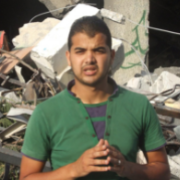
– Abdallah Aljamal is a Gaza-based journalist. He is a correspondent for The Palestine Chronicle in the Gaza Strip.



